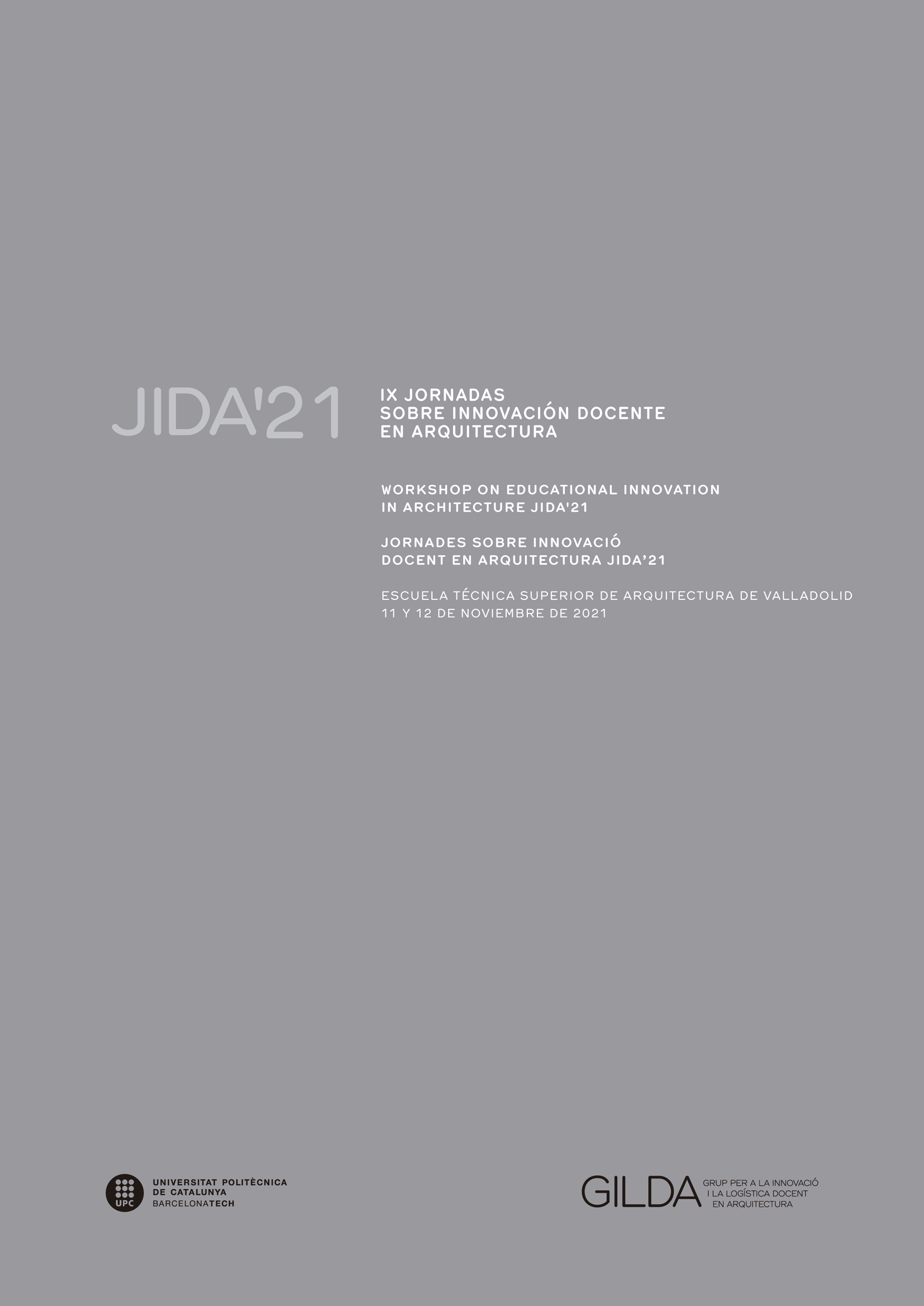The experience of inhabiting in new students: a teaching resource
DOI:
https://doi.org/10.5821/jida.2021.10558Keywords:
housing, contemporary living, critical thinking, training in values, virtual classroomAbstract
The training in values of future architecture professionals and their awareness of the role they will play in society are not topics that are often dealt with specifically in higher studies in Architecture. However, the living situations during the COVID-19 pandemic have revealed great spatial demands that require professionals aware of the needs of their now. In the teaching experience that is described and analyzed in this text, the main topic is housing and its adaptability to contemporary living, taking as a starting point the observation and questioning of the experience of living itself. The virtual environment at a time of confined teaching and the teaching methodology based on active learning, will be the supports of this rehearsed activity with new students in Architecture.
References
BEISI, J. (1995). “Adaptable housing or adaptable people?” en Architecture & Behaviour, vol. 11, n. 2, pp. 139-162.
BRAND, S. (1994). How buildings learn. What happens after they’re built. New York: Viking.
FINKEL, D. (2008). Dar clase con la boca cerrada. Valencia: publicaciones de la Universitat de València.
GIMENO SACRISTÁN, J. et al. (2011). Educar por competencias, ¿qué hay de nuevo? Madrid: Morata
GÓMEZ-PORTER, P. F. (2021) “La vivienda colectiva de la modernidad en tiempos de COVID19 aportaciones del paradigma habitacional”, en Arquitecturas del Sur, n. 38(59), pp. 28-43.
GRANDA JARAMILLO, J.A. (2019). Estrategias conceptuales para el habitar contemporáneo: hacia una vivienda del tiempo. Tesis doctoral. Valencia: Universitat Politècnica de València. http://hdl.handle.net/10251/134834 [Consulta: septiembre 2021]
GONZÁLEZ MAURA, V.L. (2020). Educar en valores en la Universidad. ¿Para qué? y ¿Cómo?. La Habana: VGM
MONTANER, J.M.; MUXÍ, Z. y FALAGÁN, D.H. (2012). Herramientas para habitar el presente. La vivienda del siglo XXI. Barcelona: Universitat Politèctica de Catalunya
MORALES SOLER, E. y MINGUET MEDINA, J. (2020). “Yo, tú, nosotras y el tiempo en el espacio habitado” en García Escudero, D. y Bardí i Milà, B. Jornadas sobre Innovación Docente en Arquitectura JIDA’20. Barcelona: UPC IDP; GILDA
MORIN, E. (2007). La mente bien ordenada. Barcelona: Seix Barral.
MUXÍ MARTÍNEZ, Z. (2010) “Revisar y repensar el habitar contemporáneo” en Revista Iberoamericana de Urbanismo (RIURB), n. 3, pp. 1-9.
PALLASMAA, J. (2016). Habitar. Barcelona: Editorial GG, pp. 7
PORLÁN, R. (2017). Enseñanza universitaria. Cómo mejorarla. Sevilla: Universidad de Sevilla y Ediciones Morata
REDONDO PÉREZ, M. y MUÑOZ COSME, A. (2020). “Aprendizaje confinado: Oportunidades y percepción de los estudiantes” en García Escudero, D. y Bardí i Milà, B. Jornadas sobre Innovación Docente en Arquitectura JIDA’20. Barcelona: UPC IDP; GILDA
GESTO, J. (2021). “Repensando un nuevo modelo ciudad post-COVID-19” en Designia, n. 8(2), pp. 9-25.
URBE ORTIZ, J.L. (2011). “La Escuela de Arquitectura de la Universidad de Talca: un modelo de educación” en DEARQ - Revista de Arquitectura, n. 9, pp. 62-73.






















